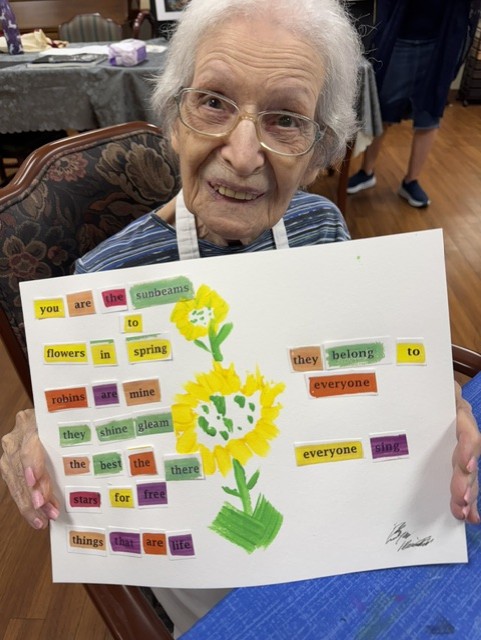Shel Silverstein’s book, “The Giving Tree”, first published in 1964 has been both beloved and banned over the years. For many the story of the relationship between the tree and the boy is one about friendship with a message about how to love unconditionally as the tree did for the boy. Although the central message is about unconditional giving, it was banned at a library in Colorado in 1988 because it was seen as being sexist as the boy continued to take and take and take from the female tree without giving anything in return. Others have suggested that the boy is narcissistic and the tree, an enabler.
However, as with any good thing, over-emphasis on something, like giving, can be detrimental to any one of us. Which I believe is the tragedy of “The Giving Tree”. There are potential risks when we give to others, even those we love and even when we give because we feel good about that giving. By the end of the story, the boy is a fully grown man and the tree is now a stump, depleted of anything else to give other than a seat.
Giving and Learning
Which brings me to the subject of this blog series about Care-Giving. Our culture’s use of this language suggests a one-sided relationship and names the actions of the individual(s) who have the resources, including physical, emotional, intellectual, and vocational, to give to another person. We don’t regularly talk about the care-receiver which is a passive “role”. I am not suggesting that everyone is like the boy who takes without regard to the relationship and source of the giving. However, in healthy relationships all involved have the capacity to give and to receive, to grow and to learn from each other.
Richard Leider, author and life coach, whose work centers on what gives us meaning and purpose, particularly in later life, suggests that we post the words, “Give” and “Grow” on our mirror. That way we can ask ourselves every morning, what do I expect to give today and how will I grow today? And then each evening, reflect on what I gave and how I grew. I am going to give this practice a try.
Appreciating Each Other
In 2015 I had the opportunity to attend the International Conference on Aging and Spirituality where I attended a workshop about “Care-Sharing”. Marty Richards, a gerontologist, was the presenter and I enjoyed the multiple opportunities I had in subsequent years meeting her again at various other conferences. Her concept of “care-sharing” has continued to echo in my thinking ever since.
She contributed a chapter in the book, Essential Spirit, about the Essential Spirit of Care Sharing. She grounds caring relationships in the understanding that both caregiving and care receiving are opportunities for each person to encounter the sacred. She lifts up the work of Henri Nouwen,
“It is a gesture that comes forth from a courageous confession of our common human need for one another and the grace of compassion that binds us together with brothers and sisters like ourselves who share with us the wonderful journey of life.”
When we reframe the relationship as “caresharing” there is the intentionality of honoring that each person is worthy of dignity and respect, each has gifts to offer the other. Gifts which are needed and appreciated by the other. Nouwen’s own journey in this understanding grew when he moved into a La Arche community in Canada which includes individuals who live with and without intellectual disabilities. Nouwen spoke and wrote about the deep lessons he learned as he lived in this community, giving of his physically-abled abilities and receiving the insight and perspective of those who were differently abled.
Interdependence
Whether we are talking about professional relationships when one person receives payment for their care giving expertise, such as nurses, aids, and therapists or more familial relationships where the giver is related to the receiver by commitment or genes, the stress of providing adequate and appropriate care can be immense. Particularly when caring for family members, the responsibility to give the care is often on top of the ordinary responsibilities already present in their lives—work, care for other members of the family both younger and older, responsibilities already committed to in the larger community. In the caregiving framework, the relationships become transactional. The one receiving care is not expected to contribute to the care or well-being of the carer. While the one providing the needed care can be in jeopardy of depleting themselves much in the way of the Giving Tree.
But Marty Richards reframes the relationship preferring instead that both are care-sharers. This concept resonates with me and the need for us to understand that we are interdependent beings. Caresharing is a way of talking about the reciprocal nature of relationships, when each sees the power of what they can offer each other. Each can learn from the other as we acknowledge the presence of the sacred in the relationship.
I believe that one of the obstacles of our reframing the common language of “caregiving” is that we need to think about what it means to be the receiver of care. As the independent adults that we are raised to be in the American context, to receive care, to face our vulnerability, is a sign of weakness. We spend most of our lives putting up the image that we are strong and independent and when we do need care from others, we wrestle with feelings of shame or weakness. And yet, there are often many points in our lives when we do need help. There are times when our lives depend on the gifts of others. So, how then do we approach these relationships when we feel lesser than we used to be, or we “ought” to be and find ourselves recipients of someone else’s care?
In thinking about this relationship in terms of care-sharing, we can identify that even when we are experiencing the diminishment that accompanies illness and disease, we can offer empathy to those who are providing care. We can, as Richards states, “recognize what is most deeply human and most deeply divine in the other person so that both have a chance to give and receive, to honor and learn from each other.”1
Affirming the Worth of a Person’s Humanity
One final note in support of the concept of “caresharing.” Sharing is about serving, not just giving. In serving each other we are affirming the wholeness in each other—a concept Richards attributes to Rachael Naomi Remen. The goal of “caresharing” is “maintaining the equality between persons…affirming the worth of a person’s humanity”.
Returning to the idea of Lieder that we think about how we will “give” and “learn” each day might just be one way to help us in this process. When we learn, we are receiving opportunities to reflect and change. We can receive new knowledge or insight even as we find ways to give to others.
The terminology of “care-giving” is deeply ingrained in our culture. But that won’t keep me from giving up on the possibility that by using the phrase “care-sharing” we can find ways to be better receivers of care. And with this shift in terminology may we understand that giving and receiving are mutual actions which have the power to enrich us all.
1 The Essential Spirit. Donald R. Koepke ed. Pickwick Publications, Eugene, Oregon. 2016. P. 94.
For Reflection (either individually or with a group)
Read the blog. Read it a second time, maybe reading it aloud or asking someone else to read it aloud so you can hear it with different intonation and emphases. Invite the Divine to open your heart to allow the light of new understanding to pierce the shadows of embedded assumptions, stereotypes, and ways of thinking so that you may live more abundantly. Then spend some time with the following questions together with anything or anyone who helps you reflect more deeply.
- When have you been in need of someone else’s care? How did that feel for you?
- As a care recipient, have you learned anything from the person who offered care to you?
- For one week, ask yourself every morning, what do I expect to give today and how will I grow today? At the end of the day, reflect on what you gave and how you grew.
Download a pdf including the Reflection Questions to share and discuss with friends, family, or members of your faith community small group.
3/21/24 14:00
View all articles by:






















